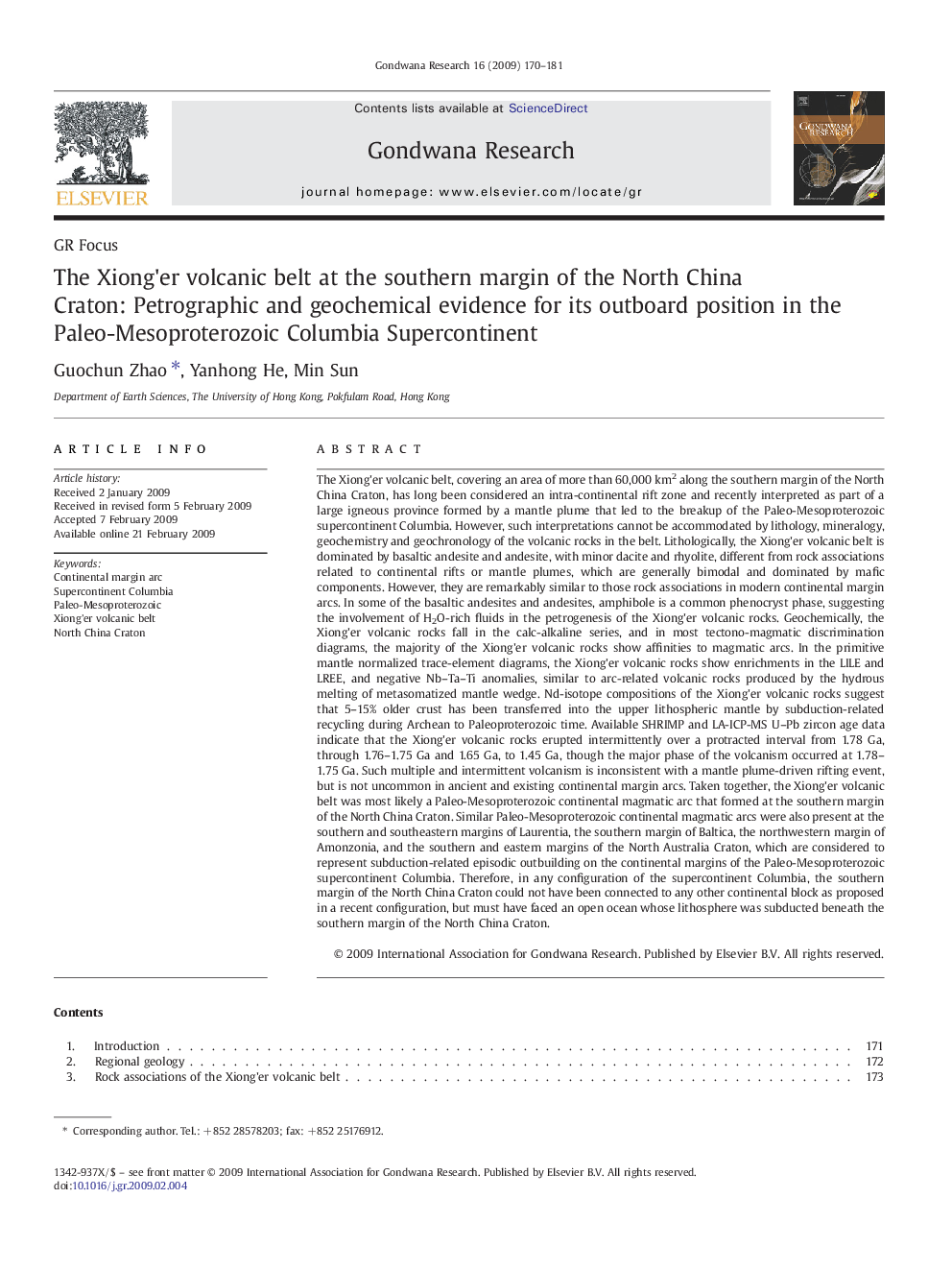| کد مقاله | کد نشریه | سال انتشار | مقاله انگلیسی | نسخه تمام متن |
|---|---|---|---|---|
| 4727478 | 1356380 | 2009 | 12 صفحه PDF | دانلود رایگان |

The Xiong'er volcanic belt, covering an area of more than 60,000 km2 along the southern margin of the North China Craton, has long been considered an intra-continental rift zone and recently interpreted as part of a large igneous province formed by a mantle plume that led to the breakup of the Paleo-Mesoproterozoic supercontinent Columbia. However, such interpretations cannot be accommodated by lithology, mineralogy, geochemistry and geochronology of the volcanic rocks in the belt. Lithologically, the Xiong'er volcanic belt is dominated by basaltic andesite and andesite, with minor dacite and rhyolite, different from rock associations related to continental rifts or mantle plumes, which are generally bimodal and dominated by mafic components. However, they are remarkably similar to those rock associations in modern continental margin arcs. In some of the basaltic andesites and andesites, amphibole is a common phenocryst phase, suggesting the involvement of H2O-rich fluids in the petrogenesis of the Xiong'er volcanic rocks. Geochemically, the Xiong'er volcanic rocks fall in the calc-alkaline series, and in most tectono-magmatic discrimination diagrams, the majority of the Xiong'er volcanic rocks show affinities to magmatic arcs. In the primitive mantle normalized trace-element diagrams, the Xiong'er volcanic rocks show enrichments in the LILE and LREE, and negative Nb–Ta–Ti anomalies, similar to arc-related volcanic rocks produced by the hydrous melting of metasomatized mantle wedge. Nd-isotope compositions of the Xiong'er volcanic rocks suggest that 5–15% older crust has been transferred into the upper lithospheric mantle by subduction-related recycling during Archean to Paleoproterozoic time. Available SHRIMP and LA-ICP-MS U–Pb zircon age data indicate that the Xiong'er volcanic rocks erupted intermittently over a protracted interval from 1.78 Ga, through 1.76–1.75 Ga and 1.65 Ga, to 1.45 Ga, though the major phase of the volcanism occurred at 1.78–1.75 Ga. Such multiple and intermittent volcanism is inconsistent with a mantle plume-driven rifting event, but is not uncommon in ancient and existing continental margin arcs. Taken together, the Xiong'er volcanic belt was most likely a Paleo-Mesoproterozoic continental magmatic arc that formed at the southern margin of the North China Craton. Similar Paleo-Mesoproterozoic continental magmatic arcs were also present at the southern and southeastern margins of Laurentia, the southern margin of Baltica, the northwestern margin of Amonzonia, and the southern and eastern margins of the North Australia Craton, which are considered to represent subduction-related episodic outbuilding on the continental margins of the Paleo-Mesoproterozoic supercontinent Columbia. Therefore, in any configuration of the supercontinent Columbia, the southern margin of the North China Craton could not have been connected to any other continental block as proposed in a recent configuration, but must have faced an open ocean whose lithosphere was subducted beneath the southern margin of the North China Craton.
Journal: Gondwana Research - Volume 16, Issue 2, October 2009, Pages 170–181